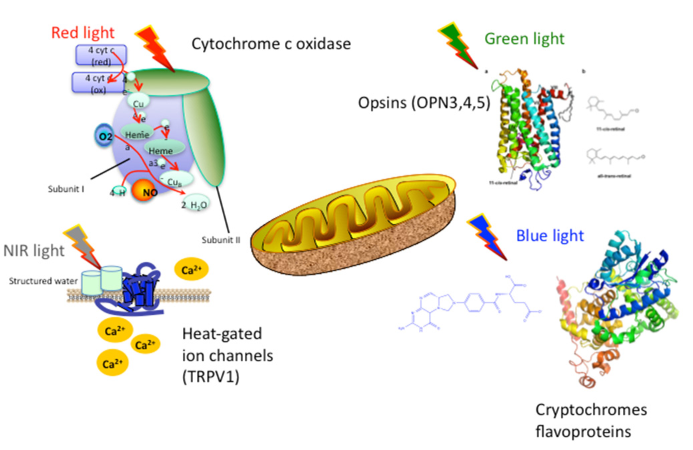I wrote an article about the human studies with red light therapy / photobiomodulation (PBM) a few years ago and didn’t publish it. I’ll update it and follow-up soon. In the meantime…
Don’t write off the potential of PBM. We accept many biological influences of light – vitamin D synthesis, circadian rhythms, mood disorders, getting a tan and some endorphins, artificial light and blue blockers – and that’s just the stuff most pertinent to humans.

PBM: what’s it supposed to do?
help with wound healing & pain, inflammation & swelling, although it’s actively being studied in many other contexts – notably, to do with spine/nerves/brain stuff
Some people think it’s important to focus on wavelengths 600-700 nm (for superficial applications) and 780-900 nm (for deeper tissues) and not in between because in part, too much total PBM might reduce efficacy so cut out the ones with less biochemical activity so you can get more of the active wavelengths (Chung, Hamblin et al., 2012).
Disclaimer: there are a lot of inconsistencies in the PBM literature. Different doses, duration, surface area exposed, etc., etc., that make it hard to come to firm conclusions on any of it. That, plus, some of the units can get pretty pricy, especially since there’s no clear guarantee they’ll do anything for you. I feel ya.
One effect that seems pretty consistent is on improving skin health/appearance.
For the rest of this article and more, head over to Patreon! Five bucks a month for access to this and all previous articles. It’s ad-free and you can cancel if it sucks
These pork rinds are the bomb 🙂
For personalized health consulting services: drlagakos@gmail.com.
Affiliate links: Still looking for a pair of hot blue blockers? TrueDark is offering 10% off HERE and Spectra479 is offering 15% off HERE. Use discount code LAGAKOS for a deal on CarbonShades. If you have no idea what I’m talking about, read this then this.
